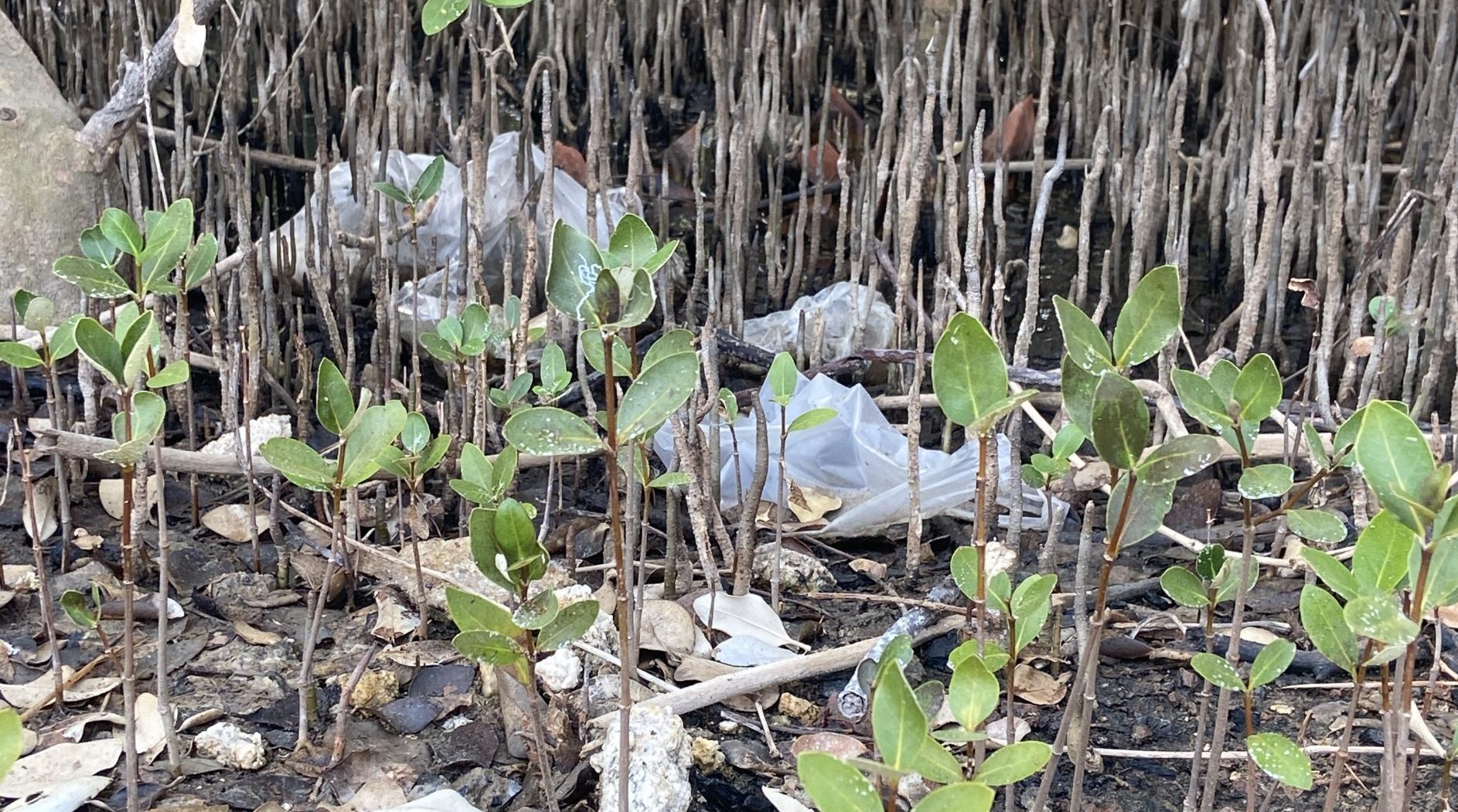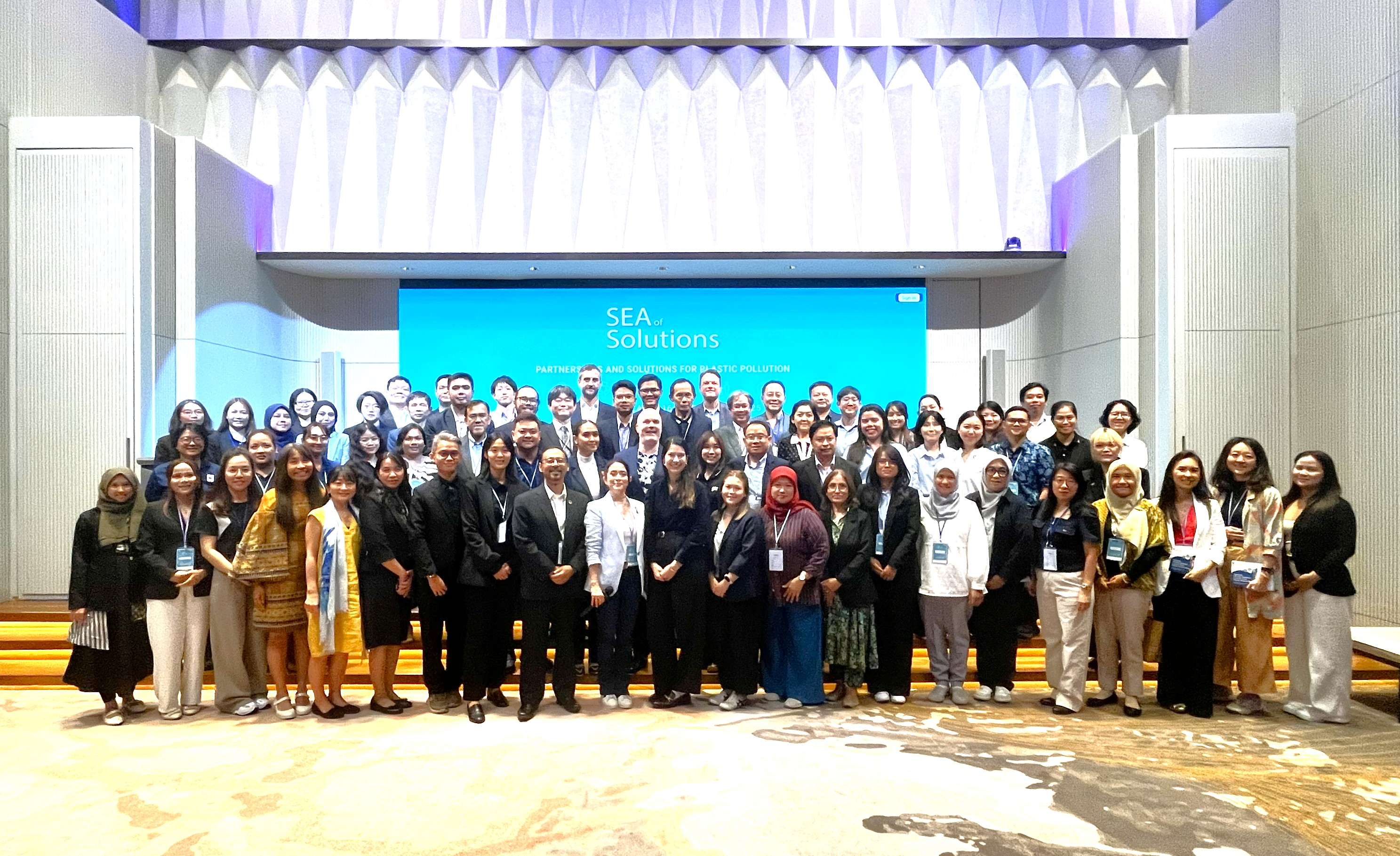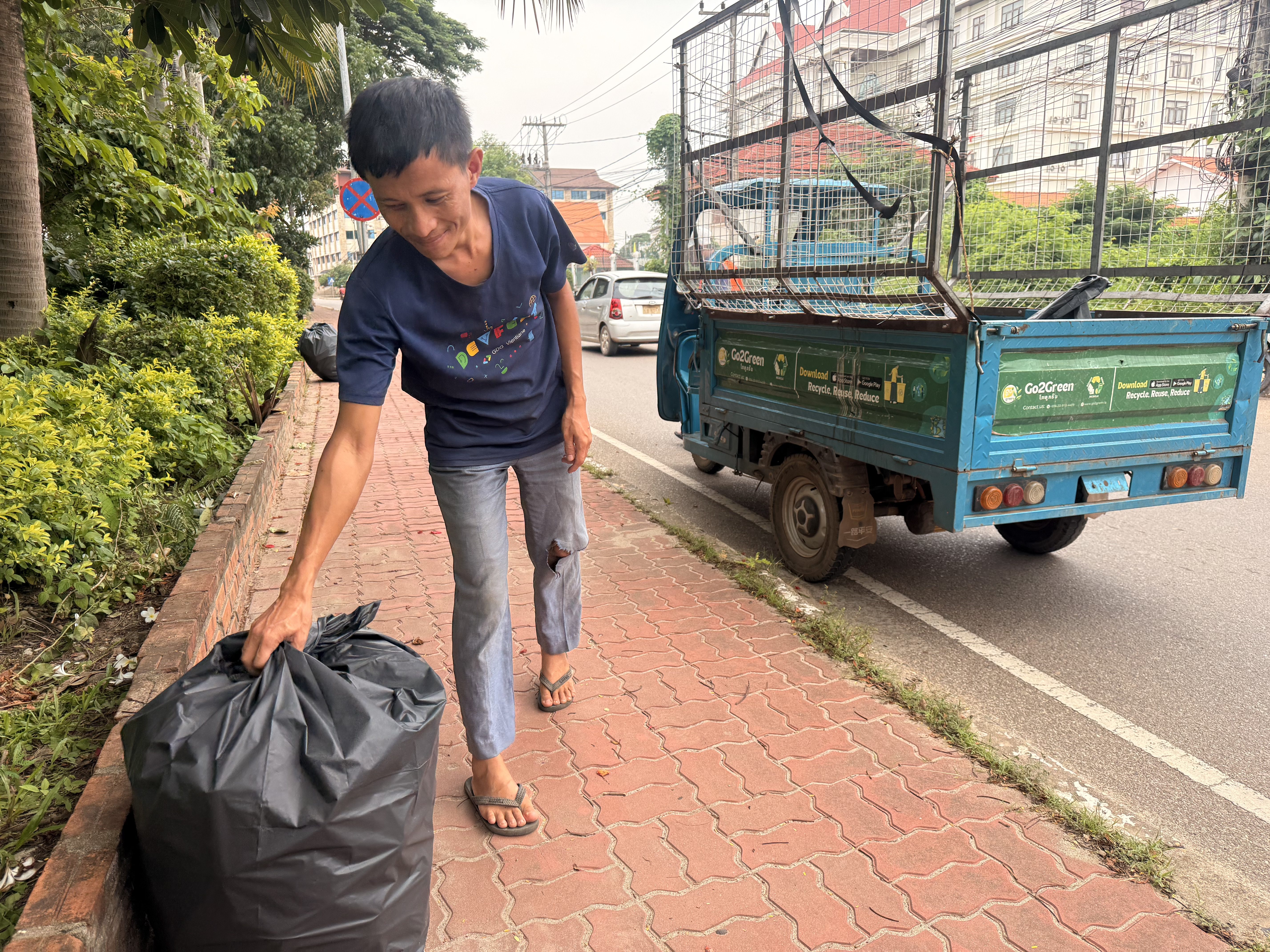

Samut Prakan, 6 March 2023: Mangroves are a powerful carbon sink, essential in mitigating climate change. However, large areas of mangrove forests face a huge threat from plastic pollution, including the Bang Pu mangrove conservation forest in the south of Bangkok, Thailand.
The Bang Pu 102-hectare mangrove forest at Samut Prakan, lies at the mouth of the Chao Phraya River, which carries an estimated 4,000 tonnes of plastic waste annually into the Gulf of Thailand. Inevitably, some of this plastic waste ends up in the mangrove forest, jeopardising the habitat of more than 200 species of birds and 70 species of benthic fauna.
A team from The Regional Knowledge Centre for Marine Plastic Debris (the Centre) visited the mangrove forest, and witnessed first-hand an area next to the Chao Phraya River covered in plastic waste, including food packaging (bottles, bags, sachets) and fishing equipment (fishing nets and buoys). This waste most likely came from either direct littering by people or through the water current.
Conditions were no better than back in early 2019, despite a clean-up activity on 6 July 2019 organised by Toyota and the International Union for Conservation Nature (IUCN), where 2.8 tons of waste was collected by more than 2,000 participants from NGOs, schools, and private companies. However, no such clean-up has been organised since then due to the COVID-19 pandemic, which explains the plastic waste piling up along the river's shoreline.
Rising Plastic Pollution in Mangrove Forests
This condition is not unique to Bang Pu. Throughout Southeast Asia, more and more plastics – including macroplastic and microplastic – are widely distributed into the ecosystem. An increase in plastic production, coupled with insufficient waste management, has resulted in surging plastic waste leakage into aquatic environments. As mangroves primarily grow in the estuarine area between river and sea, they are more vulnerable to plastic pollution from both sources. A mangrove’s spatial complexity can also easily enhance the trapping and retaining of plastic debris, as quoted by Luo in 2021, causing detrimental impacts unique to the mangrove ecosystem.
Plastics may be trapped among mangrove branches, due to the nature of ocean tides, during high tide or on the forest floor during low tide. Over time, plastics on the forest floor – especially of small sizes – can become embedded in the sediment, leaving traces for years to come. Studies on the extent of microplastic burial in mangrove sediment have been performed in different locations in Southeast Asia, confirming the conclusion mangrove sediment is a long-term sink for plastics.
Mangrove forests are biodiversity hotspots offering a multitude of ecological functions and ecosystem services beneficial not only to the organisms inhabiting them, but also to the surrounding communities. Mangroves provide nature-based coastal protection from storm surges, tsunamis, and flooding, as well as a shelter for diverse biota commercially valuable for fisheries. More importantly, mangroves act as major blue carbon sinks, sequestering a vast amount of CO2 crucial for mitigating global climate change.
In Southeast Asia alone – where the most extensive and diverse mangrove forests are found – the value of mangrove ecosystem services is an estimated US$4,185/ha/year on average, according to a 2021 study by Brander et al. Despite their high value, mangrove ecosystems are rapidly declining due to anthropogenic influences, thought to be caused in part by plastic pollution.
For the reasons above, protecting mangroves from plastic pollution is of high importance. The Centre has accepted the challenge to gather good practices from around the ASEAN+3 region and provide recommendations for stakeholders to reduce plastic pollution in mangrove ecosystems.
Samut Prakan, 6 March 2023: Mangroves are a powerful carbon sink, essential in mitigating climate change. However, large areas of mangrove forests face a huge threat from plastic pollution, including the Bang Pu mangrove conservation forest in the south of Bangkok, Thailand.
The Bang Pu 102-hectare mangrove forest at Samut Prakan, lies at the mouth of the Chao Phraya River, which carries an estimated 4,000 tonnes of plastic waste annually into the Gulf of Thailand. Inevitably, some of this plastic waste ends up in the mangrove forest, jeopardising the habitat of more than 200 species of birds and 70 species of benthic fauna.
A team from The Regional Knowledge Centre for Marine Plastic Debris (the Centre) visited the mangrove forest, and witnessed first-hand an area next to the Chao Phraya River covered in plastic waste, including food packaging (bottles, bags, sachets) and fishing equipment (fishing nets and buoys). This waste most likely came from either direct littering by people or through the water current.
Conditions were no better than back in early 2019, despite a clean-up activity on 6 July 2019 organised by Toyota and the International Union for Conservation Nature (IUCN), where 2.8 tons of waste was collected by more than 2,000 participants from NGOs, schools, and private companies. However, no such clean-up has been organised since then due to the COVID-19 pandemic, which explains the plastic waste piling up along the river's shoreline.
Rising Plastic Pollution in Mangrove Forests
This condition is not unique to Bang Pu. Throughout Southeast Asia, more and more plastics – including macroplastic and microplastic – are widely distributed into the ecosystem. An increase in plastic production, coupled with insufficient waste management, has resulted in surging plastic waste leakage into aquatic environments. As mangroves primarily grow in the estuarine area between river and sea, they are more vulnerable to plastic pollution from both sources. A mangrove’s spatial complexity can also easily enhance the trapping and retaining of plastic debris, as quoted by Luo in 2021, causing detrimental impacts unique to the mangrove ecosystem.
Plastics may be trapped among mangrove branches, due to the nature of ocean tides, during high tide or on the forest floor during low tide. Over time, plastics on the forest floor – especially of small sizes – can become embedded in the sediment, leaving traces for years to come. Studies on the extent of microplastic burial in mangrove sediment have been performed in different locations in Southeast Asia, confirming the conclusion mangrove sediment is a long-term sink for plastics.
Mangrove forests are biodiversity hotspots offering a multitude of ecological functions and ecosystem services beneficial not only to the organisms inhabiting them, but also to the surrounding communities. Mangroves provide nature-based coastal protection from storm surges, tsunamis, and flooding, as well as a shelter for diverse biota commercially valuable for fisheries. More importantly, mangroves act as major blue carbon sinks, sequestering a vast amount of CO2 crucial for mitigating global climate change.
In Southeast Asia alone – where the most extensive and diverse mangrove forests are found – the value of mangrove ecosystem services is an estimated US$4,185/ha/year on average, according to a 2021 study by Brander et al. Despite their high value, mangrove ecosystems are rapidly declining due to anthropogenic influences, thought to be caused in part by plastic pollution.
For the reasons above, protecting mangroves from plastic pollution is of high importance. The Centre has accepted the challenge to gather good practices from around the ASEAN+3 region and provide recommendations for stakeholders to reduce plastic pollution in mangrove ecosystems.

Research Associate



